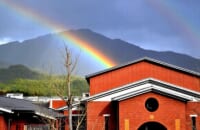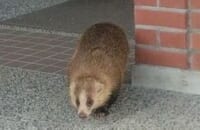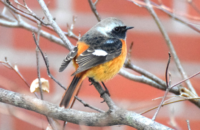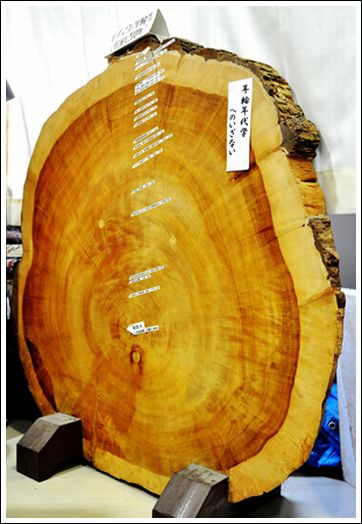 身の回りの自然現象には、縞模様が特徴的なものがあります。代表的なものは樹木の年輪ですが、他には貝殻や地層、土星の環、空の雲、南極の氷、大きくは私たちの銀河系にも縞模様はあります。
身の回りの自然現象には、縞模様が特徴的なものがあります。代表的なものは樹木の年輪ですが、他には貝殻や地層、土星の環、空の雲、南極の氷、大きくは私たちの銀河系にも縞模様はあります。
右の写真は本校がまだ今出川にあった頃に、環境省の許可を得て京都御苑で採取したイチョウの木の標本です。たまたまそばを通りかかった方が京都新聞の方で、数日後『凡語』に紹介されました。
「お正月の五日、京都御苑を散歩した時、同志社寄りの児童公園で巨大なイチョウの倒木をノコで切断する若者がいた。樹齢270年、最大直径1.3mもある。この年輪を理科の教材にしようと先生が汗を流していたのだ。このイチョウ、徳川吉宗のころのものだ。」(1995年1月17日)
年輪を数えると確かに270本ありました。採取当時の年数から逆算すると1725年(享保10年)となり徳川吉宗が活躍した頃に芽生えたイチョウの木ということになります。
最近では年輪から当時の気象を解読することも行われています。酸素同位体比からは当時の降水量まで推測されるといいます。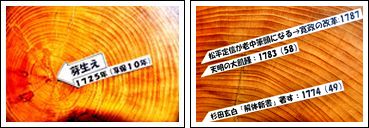 ヒトの一生はたかだか100年ほど。この年輪の前に佇むと、270年の時間とともに、その間に京都で起こり、この木も経験した数々の激動のドラマを想起することができ、からだが何となく熱くなってきます。
ヒトの一生はたかだか100年ほど。この年輪の前に佇むと、270年の時間とともに、その間に京都で起こり、この木も経験した数々の激動のドラマを想起することができ、からだが何となく熱くなってきます。 この年輪標本は理科MSにあります。
この年輪標本は理科MSにあります。
みなさんも在学中に一度はこの標本と対話してみてください。
Around us, we can find many natural phenomenon. One example of this is the annual growth rings that appear as a tree grows.
In the photos you can see a slice of a Ginkgo tree that was in the Kyoto Imperial Palace grounds. It is thought to have been 270 years old when it was cut down. We can know this because of the number of annual growth rings. This means it probably started growing when Yoshimune Tokugawa was alive.
We can learn about things such as the weather in the past through studying these growth rings. While humans can only live for around 100 years, trees can tell us about what happened 270 years ago.
You can see this tree in the Science Media Space.
